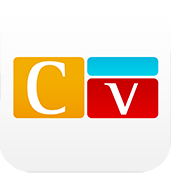After the media across Germany had reported about the ColorVisor and Blibu app by visorApps, the office of Wall AG, an international specialist for street furniture and outdoor advertising contacted us in August 2014. As a part of JCDecaux Group, Wall AG operates waiting shelters for public transit services and ‚City Toilets‘ in various German cities. In this way, Wall AG is able to utilise a public infrastructure gradually to provide wireless Internet and even computer terminals, in some cases. For example, users can take advantage of these ‚Bluespots‘ to inform themselves about restaurants, museums, bus stops, and toilets. This city information is also available via the ‚Bluespot City Info App‘ for iOS and Android.
I was asked how accessible and useful the app can be for handicapped people, since especially these people could benefit from the information provided via the app. If I’m blind and I’m standing in front of the bus stop, then of course I can’t read the schedule posted there, and if no one else is there, then I can’t ask anyone either. With the right accessibility app for handicapped users, the desired route departure time is quickly learned. The Bluespot app is capable of providing information that is especially important to handicapped people, independent of location, so I was naturally pleased to participate in the implementation of its accessibility aspects.
To receive information from an app, it is absolutely necessary that it can be operated. For this reason, the first step consisted of testing the operability of the Bluespot app for blind and visually impaired users, which I completed together with Fritz Weisshart of Webdesign Weisshart. We soon discovered that a lot of information in the app was accessible and useful in principle, but the frequent lack of alternate labelling for buttons in particular made this access very tiresome and off-putting. Several areas of the app were even completely inaccessible for blind and visually impaired users initially.
In October, I hosted a workshop on accessibility in general and on development of accessibility apps in general, which a series of employees involved in the app participated in, from project planning and technology to marketing. For several of them, topics like handicaps and accessibility were completely new in this context. I had the impression that all of them were very open to the topic and very interested. There were several questions to answer.
After the workshop, the developers of the Bluespot app went to work in order to remedy commonly identified problems. In December, there was a meeting at which the progress was tested and several tough problems were able to be solved. Most of the hurdles were able to be cleared away quickly with a suitable alternative labelling scheme. At other points, it was certainly necessary to intervene in the program structure to produce accessibility. This was also taken care of, and in February, I already was able to test the new version. As to be expected, the changes resulted in a much better and more attractive user experience. Even blind and visually impaired users are now able to access the desired information in a self-explanatory way, inform themselves about relevant locations in their environment, call there directly, or have a transit route to the destination shown to them. Definitely a big win and an example of how much can be improved.
However, development of the Bluespot app with regard to handicapped users is still not complete. The potential for displaying important information for this user group is still not exhausted: Is a restaurant equipped for wheelchair use, does a museum offer guided tours for people with learning difficulties, or can I also receive the information in sign language? The provision of this information is less a technical problem than a question of the data that is available and how it is collected. It requires awareness of the necessity of a corresponding infrastructure and continuous updating of the data. Reaching my objective of accessibility for information will therefore still take some time.
Here you get more informations of the Bluespot City Info-App.

 Deutsch
Deutsch